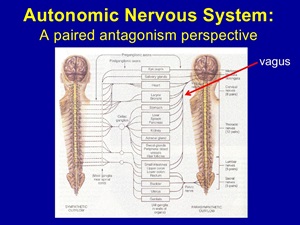High emotions can appear to be out of control – beyond regulation. Sometimes this is true, but less so than we might think.
I have been asked to say more about ‘affect regulation‘. This involves safe experiments to promote greater calmness. Maybe the label is off-putting. Affect Regulation (AR) sounds rather mysterious and complicated. Indeed, it can be; lengthy and dense texts have been written with Affect Regulation in the title.
In the complexity of it all, the topic seems to have become surrounded by mystery although Mindfulness practices have taken off in places and they are able to assist me to ‘affect regulate’.
What about even simpler and more immediate set of strategies? These are available – at our finger tips. Some can be implemented, in practice, within seconds.
Why do we need Affect Regulation?
When our less smart and older sibling – and the amygdala in particular – senses a TRIGGER – a risk or some danger – it reacts instantly to prepare us to defend ourselves and/or to escape.

The immediate release of adrenaline helps us to focus and act with unusual rapidity.
However, that only works for a short while and unless the danger is addressed and resolved, our bodies start to react badly. Our ability to respond becomes impaired.
Here are some of the things that happen. Are they familiar to you?

… we become clumsy, giddy, disorientated, less able to reason and even our vision can become impaired. We want to get to the toilet sharpish. We feel badly about ourselves and our lack of decisiveness.
Seemingly contrary reactions serve a purpose
Now, why should our bodies promote such a seemingly unhelpful set of responses? Our nervous system consists of a number elements that do not always communicate smoothly with one another.
There have been a number of ‘add-ons’ to the system over many millions of years. It would appear that our Mind Bodies share a complication that has faced Microsoft Windows. We’ve grown to rely on add-ons and it takes a long time to integrate all those add-ons!
The diagram below, illustrates how antagonistic elements in our autonomic nervous system can help us stay balanced OR get out of control.

Some safe experiments in responding to our high emotions
Controlled Breathing
With a following wind, controlled breathing can give us the micro-second we need to simply to just notice what our bodies are saying. At that point, we may be better equipped to STOP, LOOK and LISTEN (do you remember how you were taught to cross roads!).
Just noticing can help us start something else. Controlled breathing can lead us to regain an awareness of other choices available to us and provide just enough time to form options and make judgments about other ways to act.
We do not need a lot of time to act just that little bit differently.
Using the Subjective Unit of Discomfort (SUD)
Another way to respond to high emotion is to track them using the Subjective Unit of Discomfort (SUD). By giving your own measure of discomfort, it is possible to monitor emotions as they go up and down (and, indeed, they must go up and down given the way our neural networks operate).
First Person, Present Tense
A final line of enquiry I would recommend is First Person, Present Tense. This safe experiment can be a useful introduction to the value of meditation. Having said that, this experiment is – in my view – best done for short periods of time, but frequently. I’d even recommend doing it randomly.
That way, it is possible to change your habit.
Also, it faces the fact that any safe experiment is tricky to do in the heat of the moment. Too often, those safe experiments appears to fail and that’s demoralising! They are not really safe, are they?!
First Person, Present Tense involves:
- stopping what you are doing,
- sitting down somewhere that is comfortable, and
- where you are able to feel safe.
As you sit down, look around the place; what do you see? What do you hear? What do you smell and what other things can you sense NOW?
Staying in the NOW
The NOW is the crucial bit as you will (not MAY!) notice that your mind will wander doing safe experiments – to times gone by, and times ahead. Just notice that natural tendency and remind your self that the only concern NOW, is NOW.
Similarly, you may notice judgements coming to mind. Two examples I that come to my mind are “I shouldn’t just sit here” or “This is a pointless exercise“. The judgements may be right but they are still judgements – thoughts held in the head – not an experience in your whole body, NOW.
Thoughts can easily dominate, but what about our feelings and sensations? The Body Scan is concerned with respected many experiences, not just one.
Such diversions are distractions from NOW. Gently encourage your self-talk to describe only what you can see, hear and notice as you look around.
After a short time – even 30 seconds – do a body scan and assess the Subjective Unit of Discomfort (SUD). Repeat the process in order to notice whether the SUD goes up, down or stays the same.
Monitor the changing Subjective Units of Discomfort (SUD)
I cannot predict what will happen, but it pays to just notice anything you do that keeps the SUD the ‘same’, or what is happening when SUDS go up or down. Only with this information is it possible to decide what to do differently next time around, and how to build on the experiences that appeal to your curiosity.
There is an example of this process on the page relating to high anxiety.
For a user-friendly account of the neural connectedness involved here, visit a YouTube presentation by Dan Siegel talking about the hand model of the head-brain.
Further leads to consider
An Index of all pages on your Nudge
